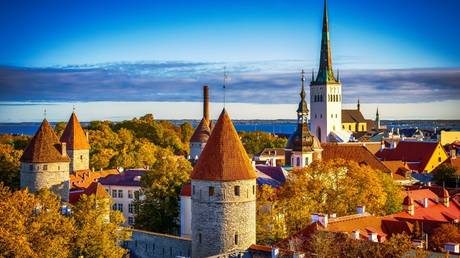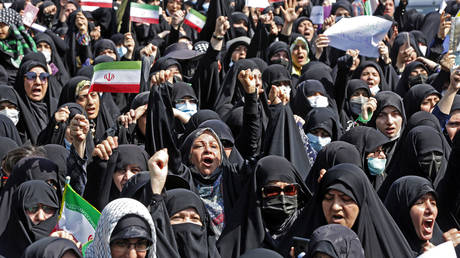
Large-scale protests are a stark reminder of the country’s old wounds
For more than a week, Iran has been in the throes of mass protests provoked by the death of Mahsa Amini. The 22-year-old woman died in hospital after spending 48 hours in a coma. As some media outlets believe, and according to witness reports, her condition was a result of being beaten by morality police for wearing her hijab “improperly.”
Demands to punish those responsible for Amini’s death were quickly followed by complaints about the country’s economic woes and corruption. The authorities are scrambling to come up with a response, as Iran’s president, Ebrahim Raisi, tries to put out fires on both the domestic and international fronts, and the Supreme Leader Ali Khamenei is reportedly ill or possibly dying.
Immorality police
On September 13, Mahsa Amini, 22, and her brother were on their way to meet their family in Tehran when they were stopped by the morality police. This is nothing much out of the ordinary in present-day Iran and amounts to just a “routine” check of a woman’s attire.
In this case, Amini was escorted to the police station to receive ‘education’ as her worried brother was told that “everything is fine, she’ll be back in an hour.”
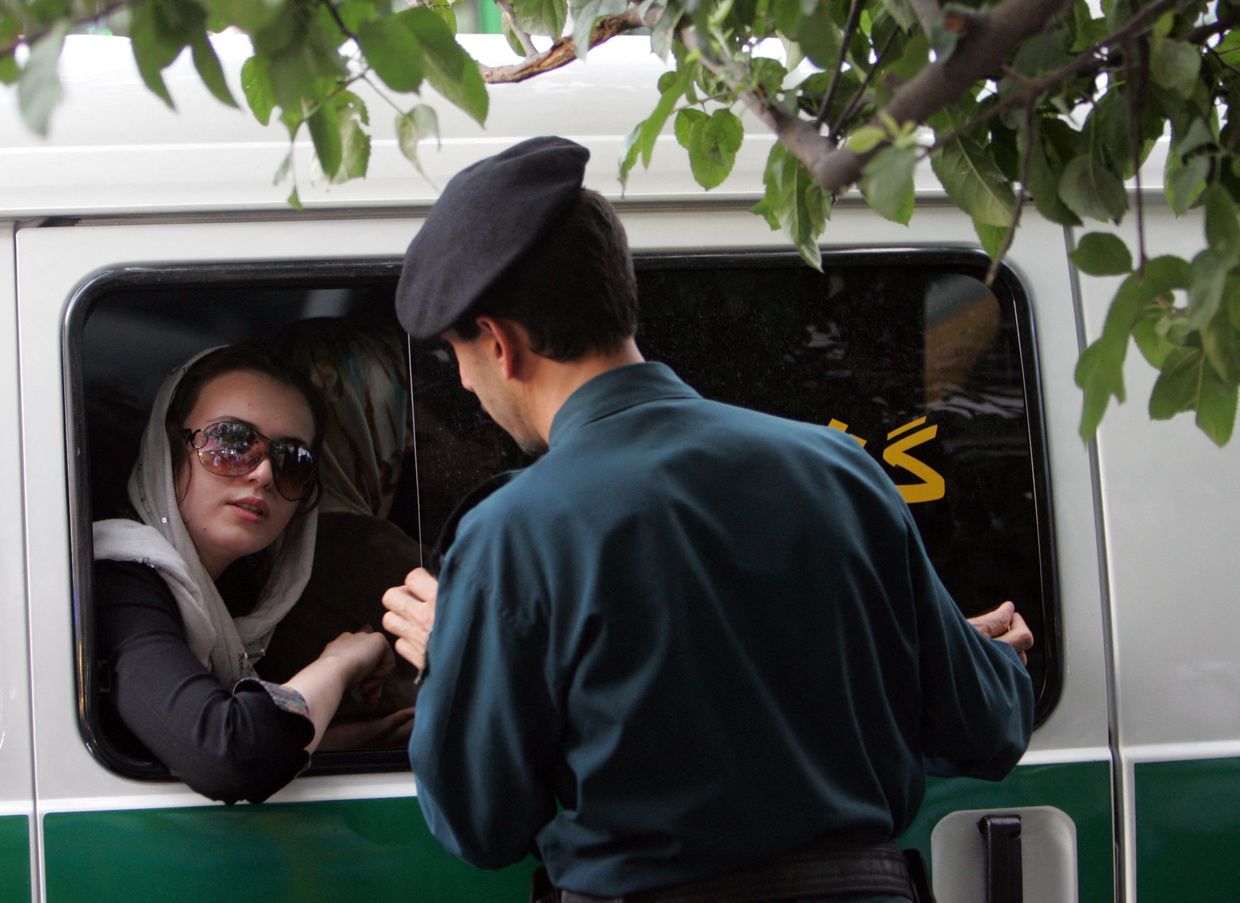
© Behrouz MEHRI / AFP
It was the last time he saw his sister conscious. Several hours later, the brother and the other family members were invited to a hospital in Tehran. Mahsa was in a coma.
The other women in the police van, who must also have been detained for ‘irregularities’ in their clothing, said the officers started beating Mahsa when she was still in the vehicle, and the attack likely continued at the station. This is a typical story for Iran, where it’s not just morality police who resort to violence, but also ordinary older women. There are plenty of videos on the internet in which young women are slapped for an improperly worn headscarf. It’s just that one of them was particularly unlucky.
Later, international outlets and Iranian reformist media published photos taken at one of Tehran’s hospitals showing the young woman, who was about to visit her family, lying on her back with a tube sticking out of her nose. The doctors tried to save her for 48 hours, but in vain. Mahsa died on Friday, September 16. The hospital team said she was brain dead on arrival.
“Resuscitation was performed on the patient, the heartbeat returned, and the patient was admitted to the intensive care unit. Unfortunately, after 48 hours on Friday, the patient suffered a cardiac arrest again, due to brain death. Despite the efforts of the medical team, they failed to revive her, and the patient died,” the hospital said in a statement that was published on its social media accounts, only to be deleted an hour later.
The police took over from the doctors, and they explained that all they did was provide “guidance,” and that there was no beating. They released CCTV footage showing the young woman fainting. In a show of support for his subordinates, the interior minister, Ahmad Vahidi, said an investigation was underway but insisted the girl had had health issues ever since she was five.
These claims were refuted by Amini’s family, who said she was almost never sick and had never suffered from epilepsy or heart problems. The worst she had experienced before she was picked up by the morality police was the common cold. Her father demanded the entire CCTV for that day should be released instead of the short footage in which she collapses. “Why didn’t they show the footage when they took my daughter out of the van? Why didn’t they show what happened in the corridors of the detention center?” Mahsa’s father demanded, but never received any answers.
Several prominent arts and sports figures posted critical comments about Amini’s death, while Robert Malley, the US special envoy for Iran, called for those responsible to be held accountable. Rights group Amnesty International has also demanded an investigation of the incident.
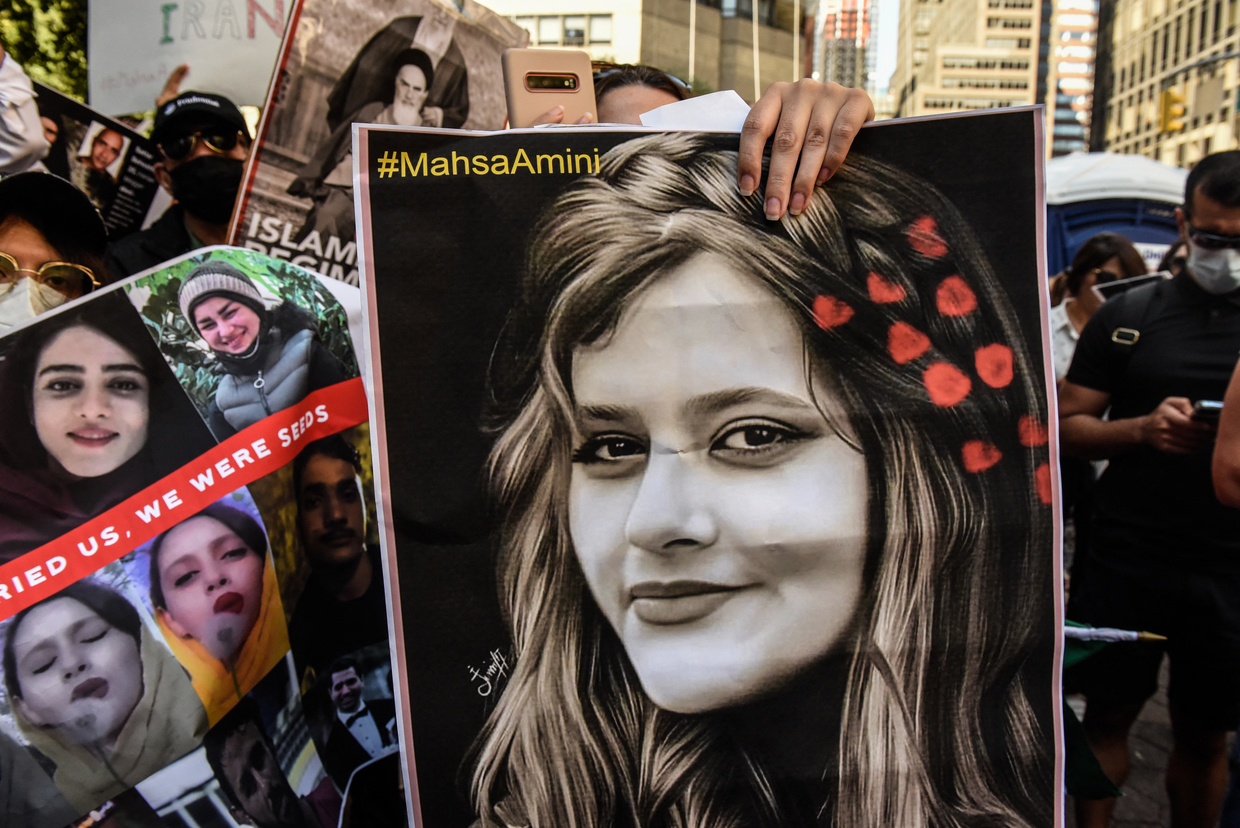
© STEPHANIE KEITH / GETTY IMAGES NORTH AMERICA / Getty Images via AFP
The first protests broke out right after news about Mahsa’s death emerged, with people demanding justice. Many had political demands as well, with some even heard chanting “Death to the dictator!” – a reference to Ali Khamenei. Internet blockage observatory NetBlocks reported an outage across Tehran, linking it to the ongoing protests. Some Iranian political activists, however, managed to go online to ask the leadership of the Islamic Republic questions about Amini’s death. Mahmoud Sadeghi, a former lawmaker and reformist politician, took to Twitter to challenge Khamenei.
“What does the Supreme Leader, who rightfully denounced US police over the death of George Floyd, say about the Iranian police’s treatment of Mahsa Amini?” he asked.
A tender religion
Amini’s alleged beating is only the latest in a series of similar incidents. Iran has been policing women’s “purity” for a long time, and the practice dates back essentially to 1979, when the modern Iranian state was born. Article 638 of the Penal Code stipulates that women who appear in public without a hijab are committing a crime. The code also allows the police to conduct arrests at will without a court order. Interestingly, before the 1979 revolution, girls in short skirts were a familiar sight in the country, not just in the streets, but also on the covers of magazines.
Issues with women’s rights in Iran are not limited to restrictions on clothing. Rights groups have repeatedly called on the international community to respond to numerous arrests on prostitution charges and convictions for speaking at rallies. Early marriages are another problem. According to Human Rights Watch, at least 16,000 girls aged 10 to 14 were married against their will just during the first six months of 2021. The UN Human Rights Committee has criticized Tehran, yet the country’s leadership has ignored the UN’s pleas to change its policies on women.
The restrictions and control are motivated by religion, even though Islam does not prescribe specific rules for dressing or conduct. Still, Iranian leaders have given Koranic ideas quite narrow interpretations. A woman can seduce by dancing and singing, they argue, so public dancing and singing must be banned. This was the logic behind the 2018 arrest of 18-year-old Maedeh Hojabri, who was detained after posting videos of herself dancing on Instagram. One of the videos has almost a million views.
Another controversy over women’s morality arose in the summer of 2022 as a result of online ads for Magnum ice cream. The video shows a striking woman wearing a red scarf and red lipstick as she is driving and smiling at the viewers before she stops and enjoys an ice cream while posing for the camera.
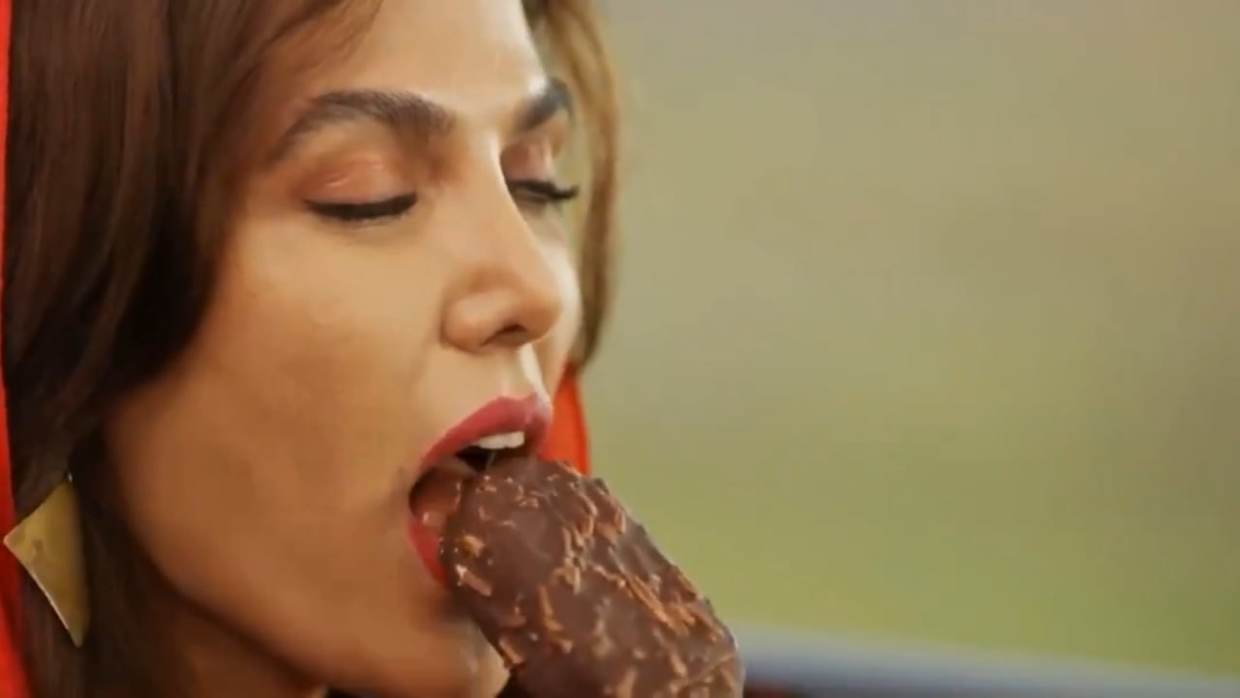
© YouTube / IranWire
The ad provoked an outcry in conservative circles. Iranian clerics demanded legal action against the manufacturer, claiming the ad ran afoul of “public decency norms” and was “an insult to women’s values.” While it was never taken up in court, the Ministry of Culture and Islamic Guidance soon issued a ban on the appearance of women in advertisements. Notices of new restrictions were sent to Iranian arts and cinema schools and advertising agencies in late July.
Legislation providing the legal basis for banning commercials with women, the ‘hijab and chastity law’, was passed in the summer of 2022. It penalizes those who refuse to wear the hijab in the prescribed manner and stipulates that a headscarf should cover the hair, neck, and shoulders. The document also authorizes police to detain violators. A decree to put this in action was signed on August 15 after Iranian women started protesting and campaigning against the government’s hardline approach to enforcing the female dress code. The protest campaigns began as early as in mid-July, to coincide with Hijab and Chastity Day. In contrast to government TV showing Iranian women walking in procession, wearing green hijabs and long white robes, the activists posted videos in which they demonstratively took the covering off on public transport or at home. Several women were arrested for breaking the law.
Reports then surfaced that the Iranian government was planning to roll out a face recognition system to detect women who do not wear the hijab properly.
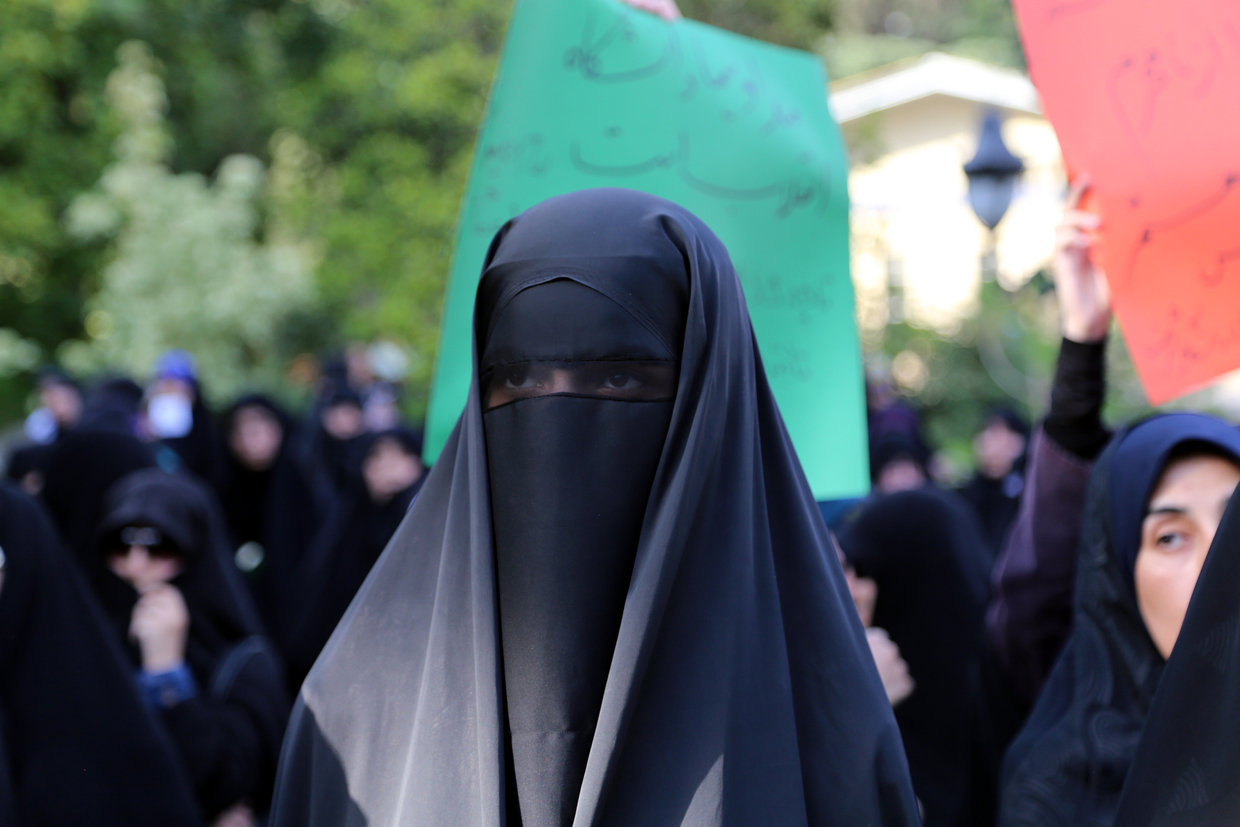
© Fatemeh Bahrami / Anadolu Agency / Getty Images
Additionally, President Raisi demanded that the current laws regulating women’s clothing be made stricter. After this decision drew criticism from a number of liberal-minded politicians, Raisi called them “arrogant.”
Misogynist, butcher, president
The crackdown on women’s rights is happening at an especially difficult time for domestic and international politics. The fact that Raisi’s government has decided to put pressure on its population exactly when it is facing a flurry of sanctions itself – with over 3,600 newly introduced restrictions – and its relations with the West are as tense as ever, is puzzling.
One of Iran’s foreign policy issues is Raisi’s image in the world. In one of the first interviews he gave after entering office, he avoided giving a direct answer on his views regarding the killing of millions of Jews during the Holocaust (and expressed doubt that they even took place).
Another interview was canceled because an American journalist refused to cover her head. And the fact that Raisi ordered the execution of thousands of people in 1980s is something his critics never forget to mention to this day.
Yet another foreign affairs challenge for Raisi is the renewal of the nuclear deal with the US (known as the Joint Comprehensive Plan of Action, JCPOA), which collapsed in 2018 after then-President Donald Trump announced a unilateral withdrawal. Since then, Russia and the EU have been struggling to bring both sides to the negotiating table. Should a new deal be signed, it would provide guarantees that Iran would not pursue nuclear weapons in exchange for partial sanctions relief. In theory, the easing of restrictions placed on Iran should stabilize the economic situation in the country, improving the lives of ordinary Iranians. There is just one issue, however – the deal is yet to be signed, and, given the rumors from Brussels, that prospect is a long way off.
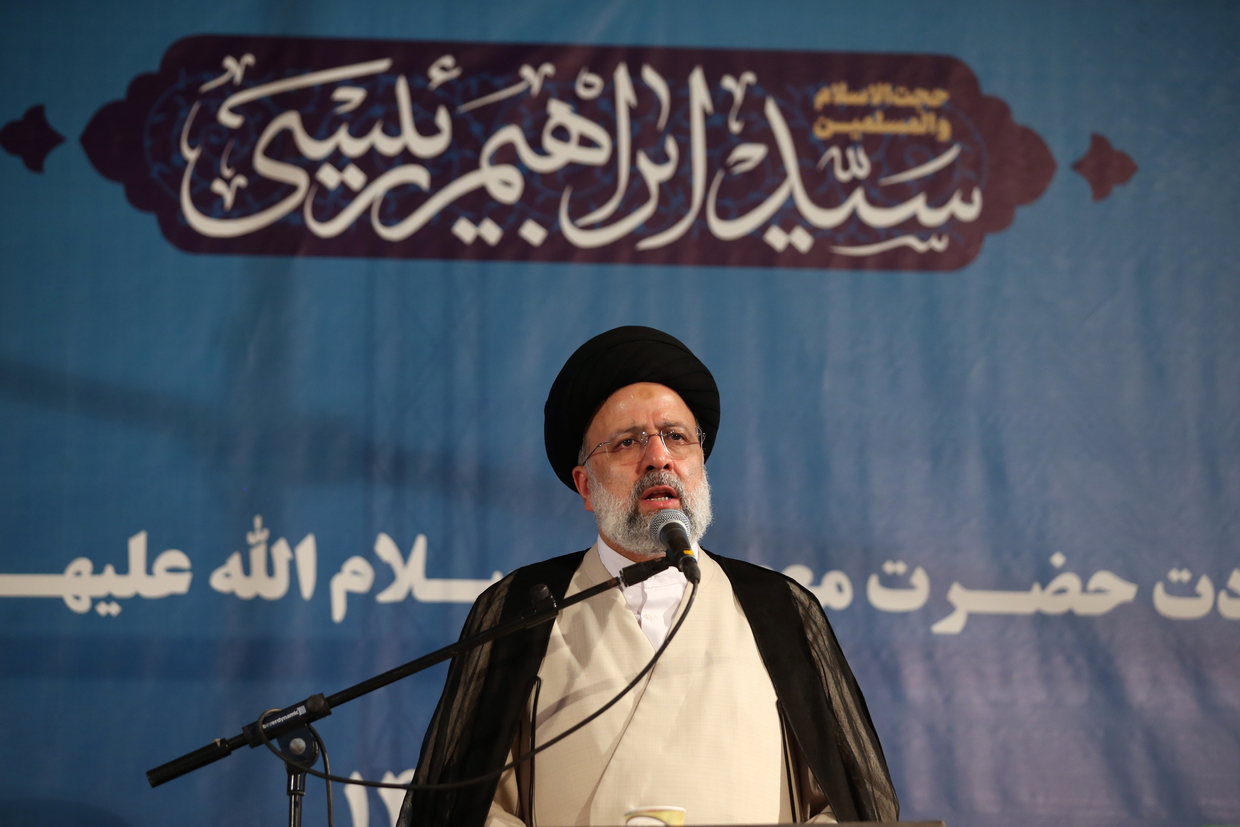
© Meghdad Madadi ATPImages / Getty Images
Historically, economic woes have been among the main factors undermining the position of Iranian leaders – now, it is affecting Raisi’s presidency. The situation took a sharp turn for the worse back in the spring, when thousands of people took to the streets, disgruntled over skyrocketing food prices. Raisi had the misfortune of being forced to make one of the most unpopular decisions of his short (so far) presidency – cutting state subsidies for imported wheat. This led to a 300% increase in the cost of certain flour-based staples. On top of that, other essential goods (such as vegetable oil and dairy products) also went up in price. The situation was further exacerbated by people rushing to stock up on food in fear of even greater price hikes.
Tehran blamed the situation on external factors: Minister of Agriculture Javad Sadatinejad said it was caused by supply disruptions resulting from the conflict in Ukraine, and accused a “neighboring country” – without specifying which – of attempting to smuggle 3 million tons of wheat out of the Islamic Republic. Sadatinejad explained that Tehran “cannot physically stop” the smugglers and, therefore, it has been left with no option but to hike prices to curb the economic advantages of smuggling.
Conservative media has blamed former President Hassan Rouhani as an easy scapegoat – he represented a reformist influence group and advocated pragmatic relations with the West. The population was unconvinced, however: they were fed up with inflation (over 30% in 2022) and unemployment (over 9%); and as a result, thousands of Iranians took to the streets all through May. Raisi was urged to “have the courage to step down since it has become clear that he cannot resolve the country’s problems.”
By the end of spring, protests erupted with renewed intensity, this time over the collapse of a ten-story commercial building which killed at least 24 people. The cause of the incident was said to be negligence in the construction process and corruption among officials who had allowed violations of building codes. Many were particularly indignant over Ayatollah Khamenei’s response – rather, lack thereof – as he decided to not announce a national mourning period. He is also believed to have ordered the media to sweep the story under the rug. The people took to the streets again, their voices louder than before, demanding a fair investigation into the tragedy. There was, however, a new slogan this time: “Death to the dictator!” They were demanding the resignation of Ali Khamenei.
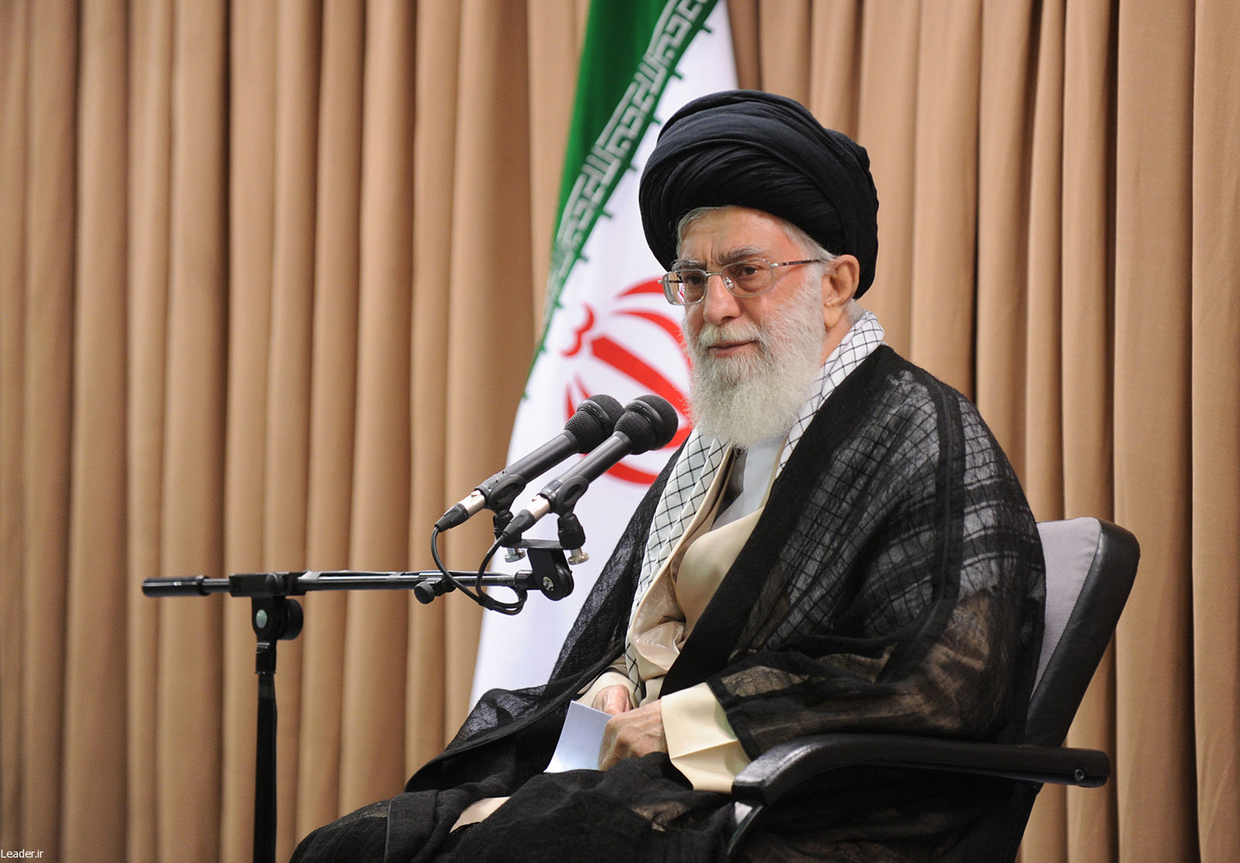
© Leader.ir – Pool / Anadolu Agency / Getty Images
Crisis at the top
Judging by the rumors spreading in Iranian media and social media in recent months, these wishes may not be far from coming true. Reports that the supreme leader is dying alternate with photos of him at public events. Although the view that Khamenei has a double is quite popular, there is no direct evidence that this is true. He has practically stopped appearing at public in recent months, and even missed a biannual meeting of the Assembly of Experts on September 6, where his presence is required. On the same day that news of Amini’s death appeared, the New York Times reported that the supreme leader had canceled all meetings because he was suffering from a high temperature that arose after an operation. The newspaper’s sources claimed that Khamenei was in critical condition (though he soon improved). Although Khamenei did appear in public the next day during the Arbain religious ceremony, this did little to remove questions about the future of Iran.
Rumors about the deterioration of his health may confirm claims that he was diagnosed with cancer seven years ago. Given Raisi’s precarious situation and the mass protests that have become regular events, analogies with the fall of Shah Reza Pahlavi’s regime have become popular – he was ill and left the country in haste, virtually handing it over to religious leaders in 1979. The media in America has urged the US leadership to take a closer look at the state of the supreme leader’s health so as not to miss the moment.
In the meantime, the matter of who, at least hypothetically, will replace the supreme leader of Iran remains an open question. Khamenei himself has been in office since 1989. Questions begin with how exactly the selection procedure will take place. According to the law, the Assembly of Experts should choose the future leader, but in practice, the procedure has been carried out just once, in 1989, when Ali Khamenei was selected. There are also a lot of questions regarding the candidates themselves – so far, the current president and Khamenei’s son, 53-year-old Mojtab Hosseini, are considered to be the frontrunners. Experts suggest that, for now, Khamenei himself is overseeing the selection of his successor, especially since the discussion of candidates falls under the responsibilities of the assembly. However, it seems they shouldn’t delay, because even if disease doesn’t catch up with Khamenei, age will, as he is 83 years old.
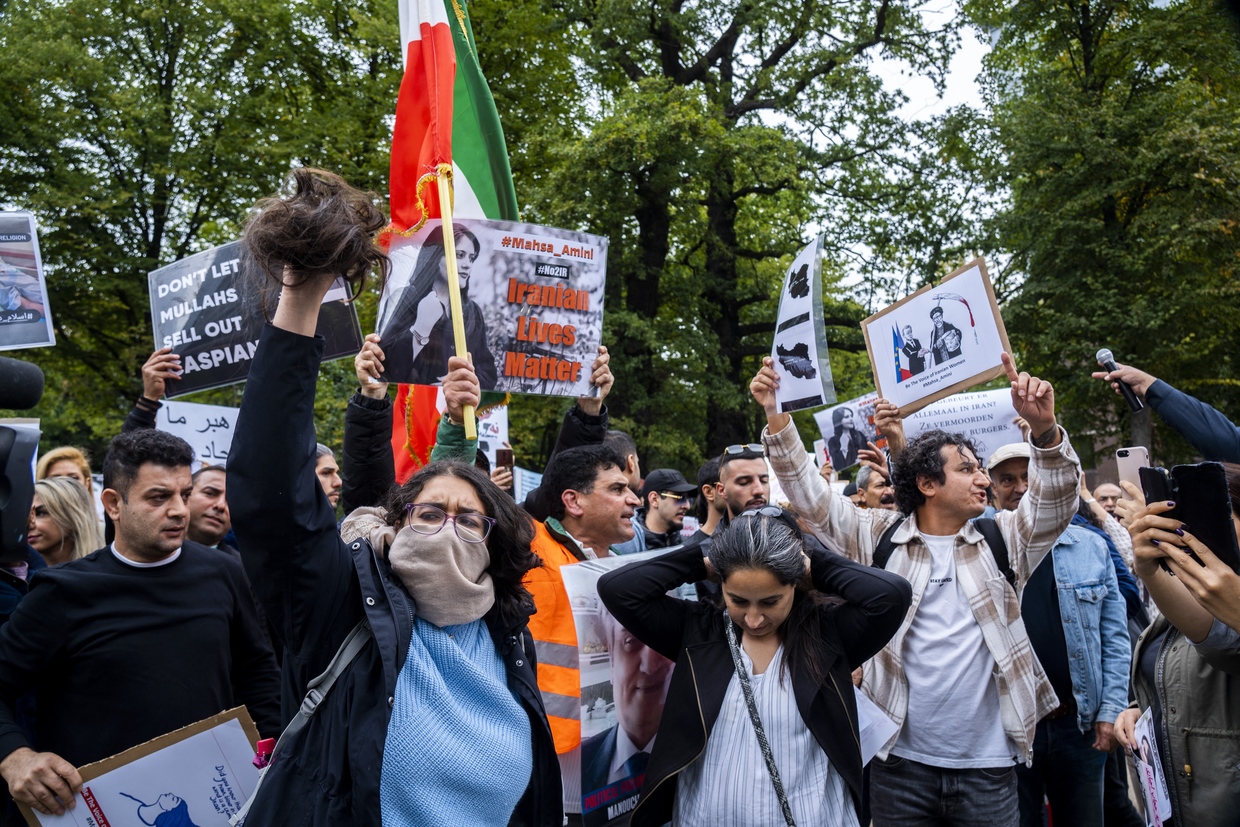
© Lex van LIESHOUT / ANP / AFP
At least 341 people were executed in Iran last year, The country has more than enough economic problems, and according to World Bank forecasts, some of them – unemployment, for example – will only get worse. However, the state has functioned under sanctions for years, even decades, and protests are quite regular. It seems as if the conservatives led by Khamenei have absolute power, so it is not surprising that they continue to tighten the laws on wearing hijabs and broadcasting commercials.
But an incident like what happened to Mahsa Amini is resonant. It is alleged that the police beat the woman into a coma for an alleged headscarf violation. Not only men, but also women took to the streets, and police beat them with batons. The internet has been flooded with these types of videos. In official Tehran, there is the desire not only to save an already tarnished image in the international arena, but also to avoid explosive consequences similar to those that occurred in 2010-11 during the ‘Arab Spring’. But if Iran escaped then, does it necessarily mean it will now? And if a video has been leaked once, can’t it pop up again?
These questions remain unanswered. There is little hope for Western sanctions to be lifted, since negotiations regarding the Iranian nuclear program have led to nothing. The supreme leader could fall at any moment, if not due to illness, then age – and what will happen to Raisi and the government then? There are no answers yet, and they are unlikely to come even when the current protests die out.



